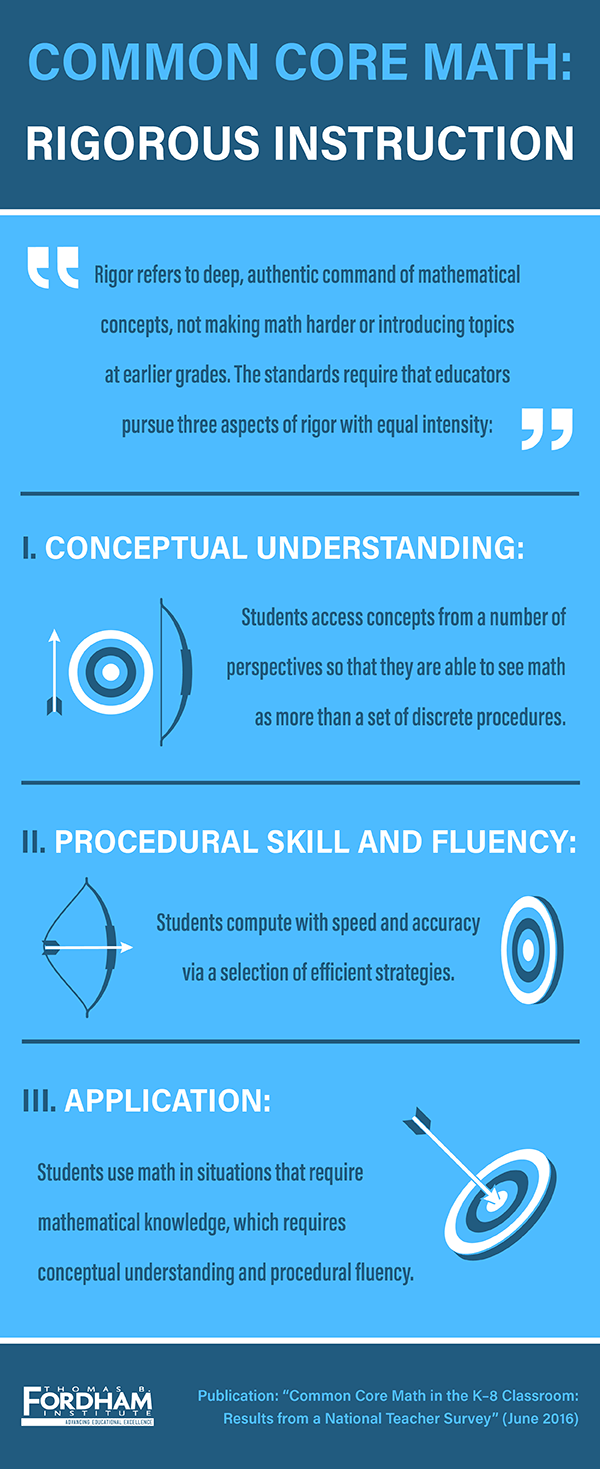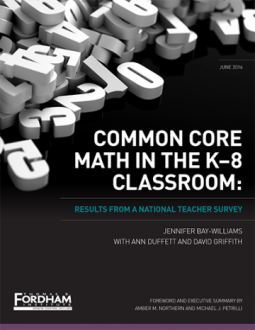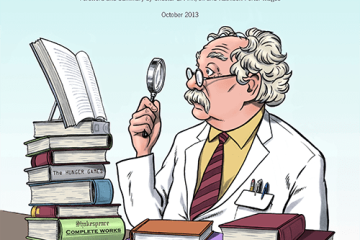In Common Core Math in the K-8 Classroom: Results from a National Teacher Survey, Jennifer Bay Williams, Ann Duffett, and David Griffith take a close look at how educators are implementing the Common Core math standards in classrooms across the nation. A nationally representative survey of over one thousand teachers reveals that they are increasingly familiar with the Common Core and believe that it will benefit students. Yet our findings also point to several areas that warrant mid-course corrections if we’re going to fulfill the standards’ more rigorous expectations.
Here are a few key takeaways:
- Teachers like the Common Core but they don’t think all of their students and parents are equally enamored. Most teachers view the standards positively, believing that they will enhance their students’ math skills and prepare them for college and beyond. But they add that students’ and parents’ views are considerably less rosy. Some of their students have “math anxiety,” they say, and 85 percent believe that “reinforcement of math learning at home is declining because parents don’t understand the way that math is being taught.”
- Teachers know what’s in the Common Core—and they’re teaching it at the appropriate grade level. Though it may seem unsurprising, it is notable that teachers are able to identify from a list of topics (some of which are “decoys”) those that reflect the standards—and they report teaching them at the grade levels where they’re meant to be taught. Once upon a time, teachers shut their doors and did their own thing. Now we have many instructors teaching to the same high standards nationwide.
- Further, they’re changing how they teach. More teachers report incorporating the standards into their teaching, including the 64 percent of teachers who say they increasingly require students to explain in writing how they arrived at their answers.
- But teaching multiple methods can yield multiple woes. The Common Core math standards require that students “check their answers to problems using a different method.” And sure enough, 65 percent of K–5 teachers are teaching multiple methods more now than before the standards were implemented. But 53 percent of teachers also agree that students are frustrated when they are asked to learn different ways of solving the same problems.
- Teachers need support. While most teachers view the standards optimistically, some also report that their math materials are not aligned to the Common Core. What’s more, teachers with students below grade level tend to be more pessimistic about Common Core’s impact on their students. Finally, striking the right balance between conceptual understanding, procedural fluency, and application has not been easy; teachers need more guidance about how to do so.
Now is not the time to grow weary, but to roll up our sleeves and help teachers succeed.
Can you correctly identity some of the key findings from our report?
Follow this link to take our quiz!
Click the graphic above to enlarge its size.







